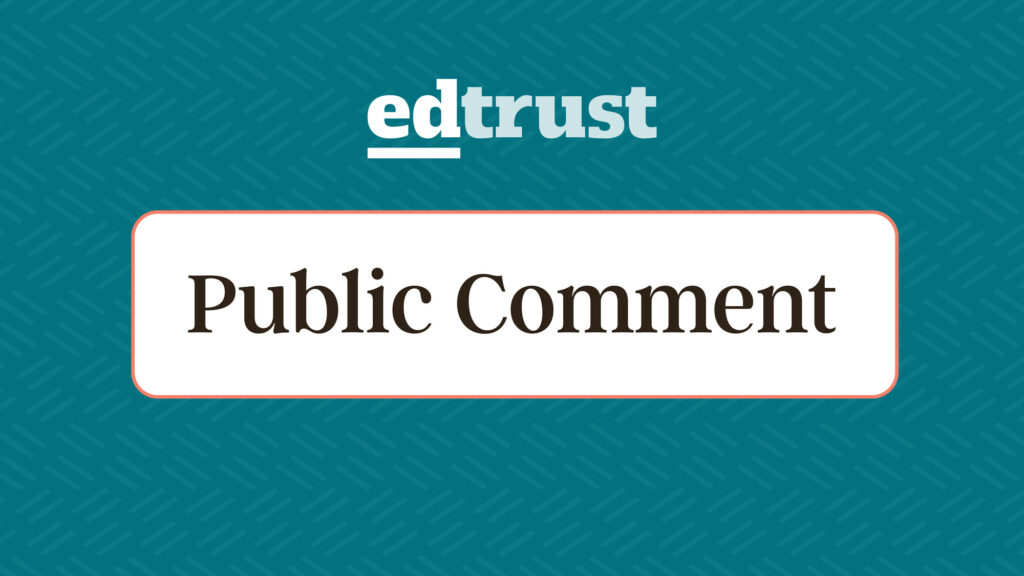Joint Comment on the Secretary’s proposed priority and definitions on Meaningful Learning Opportunities
Two organizations share feedback on Secretary’s McMahon’s proposed supplemental priority and definitions on Meaningful Learning Opportunities

October 27, 2025
Zachary Rogers
U.S. Department of Education
400 Maryland Avenue SW, Room 7W213
Washington, DC 20202-6450
Re. Comment on Secretary’s Supplemental Priority and Definitions on Meaningful Learning Opportunities (Docket ID ED-2025-OS-0680)
Dear Mr. Rogers,
We appreciate the U.S. Department of Education’s (The Department) commitment to strengthening student learning through the proposed priority on Meaningful Learning Opportunities. The emphasis on rigorous math instruction, high-quality instructional materials, personalized interventions, high-impact tutoring, strategic staffing models, and innovative assessment approaches represent important levers for improving student outcomes.
However, we are concerned that the Department’s proposed priorities lack clarity around what types of investments within these broad priorities would lead to more “meaningful” learning opportunities for students, particularly those from traditionally under-resourced student groups, including students of color, students from low-income backgrounds, students with disabilities, and multilingual learners. To support grantees in leveraging this new priority, we would encourage the Department to consider issuing guidance, which could be informed by best practices, resource guides, and research conducted by policy experts and practitioners.
For example, EdTrust has developed extensive resources with research, data, and policy recommendations on how to improve educational outcomes for all students and address disparities for under-resourced students. These can inform the Department’s implementation of these priorities and selection of grantees aligned with best practices, including work on strengthening mathematics core instruction, automatic enrollment policies for advanced coursework, barriers to accessing AP STEM courses, improving rigor and representation in high-quality instructional materials, targeted, intensive tutoring, and innovations in statewide summative assessments, as well as forthcoming work on career-connected learning in middle and high school.
We urge the Department to provide clear guidance on best practices across these priorities, how these priorities relate to one another, and how states can strategically focus their efforts to maximize student outcomes. For more details on how the Department’s priorities can best be leveraged to improve learning opportunities and outcomes for all students, please refer to our earlier comments on the AI priority and evidence-based literacy, school choice, and returning education to the states priorities.
Sincerely,
All4Ed
EdTrust